Lavender is one of the most beloved plants in the garden world — prized for its soothing fragrance, beautiful flowers, and drought-tolerant nature. Native to the Mediterranean region, lavender thrives in sunny, well-drained areas and is widely used in gardens, aromatherapy, and culinary practices. While it’s possible to grow lavender from seeds, propagation by cuttings is a faster, more reliable way to produce healthy, identical plants.
In this comprehensive guide, we’ll walk you through how to propagate lavender from cuttings, when to take them, the tools you’ll need, and care tips to help them thrive.
Why Propagate Lavender from Cuttings?
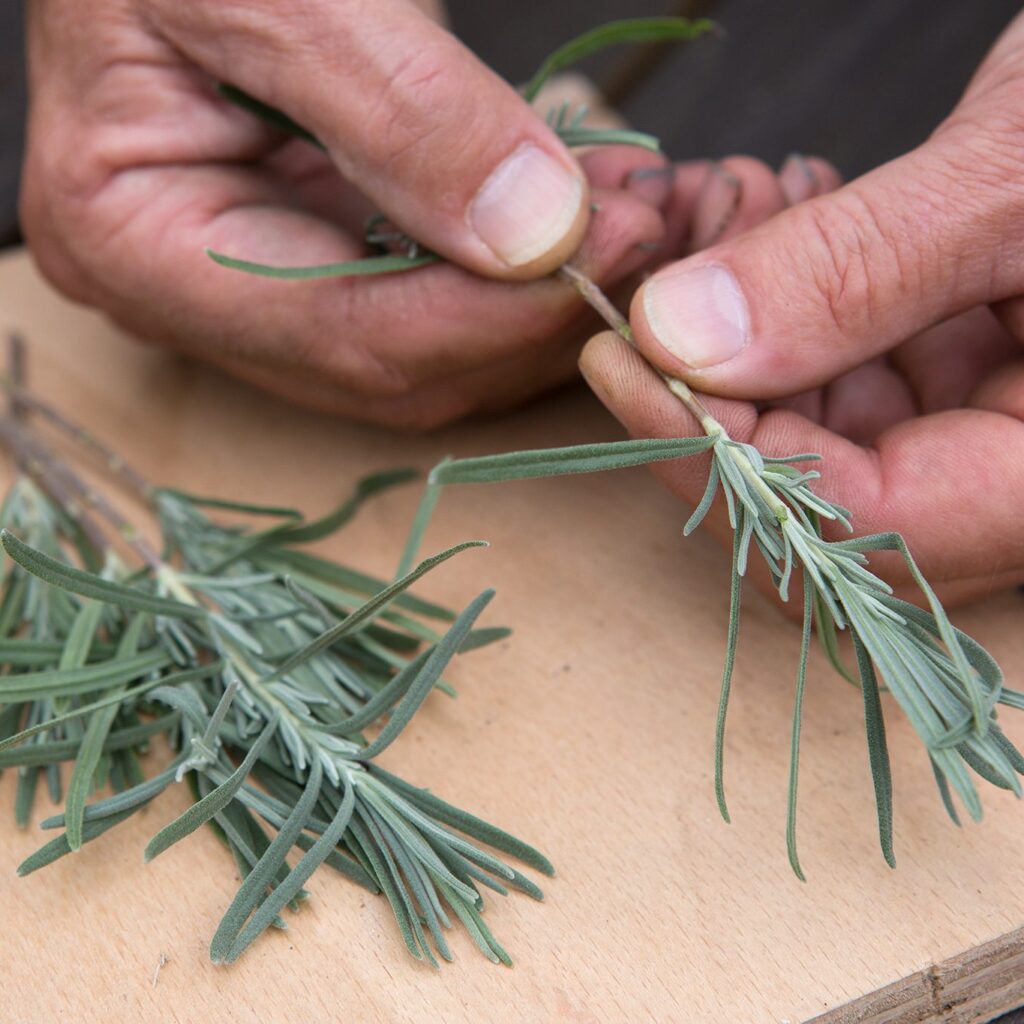
Propagating lavender from cuttings offers several benefits over growing from seeds:
- Faster establishment: Cuttings grow faster and bloom earlier than seed-grown plants.
- Genetic consistency: New plants are exact clones of the parent, preserving desirable traits such as color, size, and fragrance.
- Cost-effective: One mature lavender plant can yield dozens of cuttings, expanding your garden affordably.
- Higher success rates: Lavender seeds can be tricky to germinate, while cuttings often root reliably under the right conditions.
When Is the Best Time to Take Lavender Cuttings?
The ideal time to take cuttings depends on the type of cutting and your climate:
- Softwood cuttings: Taken in late spring to early summer from new, flexible growth.
- Semi-hardwood cuttings: Taken in mid to late summer when new growth begins to harden.
- Hardwood cuttings: Taken in late autumn or winter from mature, woody stems.
Softwood cuttings are the easiest and fastest to root, while semi-hardwood and hardwood cuttings may take longer but can be more robust.
Tools and Materials You’ll Need
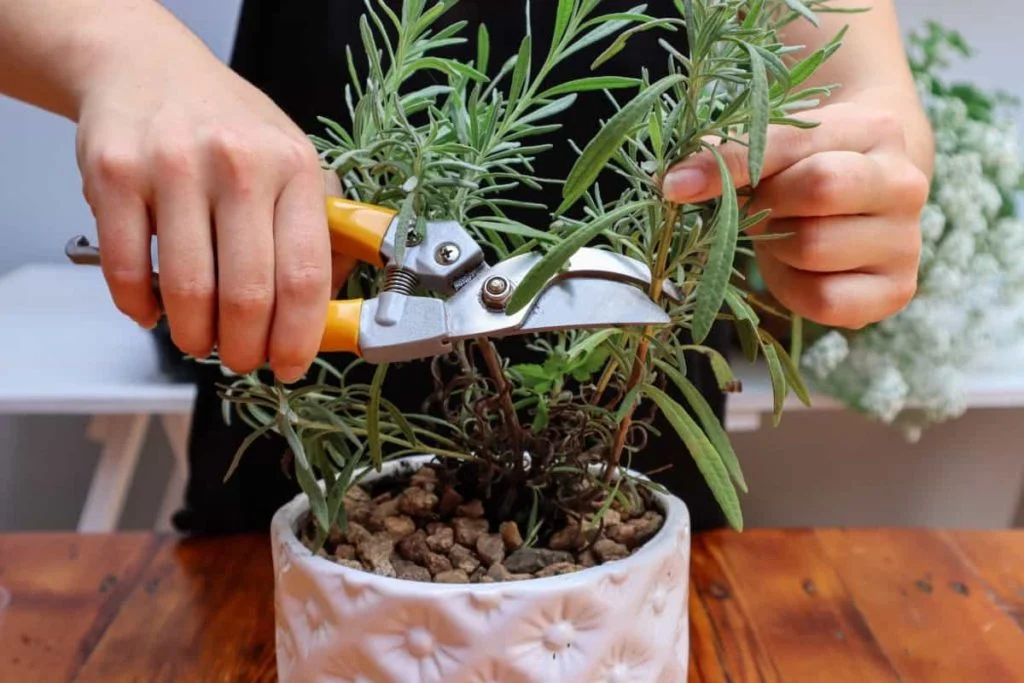
Before starting, gather these essential tools and materials:
- Sharp, sterilized pruning shears or scissors
- Clean pots or seed trays
- Well-draining potting mix (a mix of compost, sand, and perlite or vermiculite)
- Rooting hormone (optional but recommended)
- Clear plastic bag or propagator for humidity control
- Labels and a pencil
- Water mister or watering can with a fine rose
Step-by-Step Guide to Propagating Lavender from Cuttings
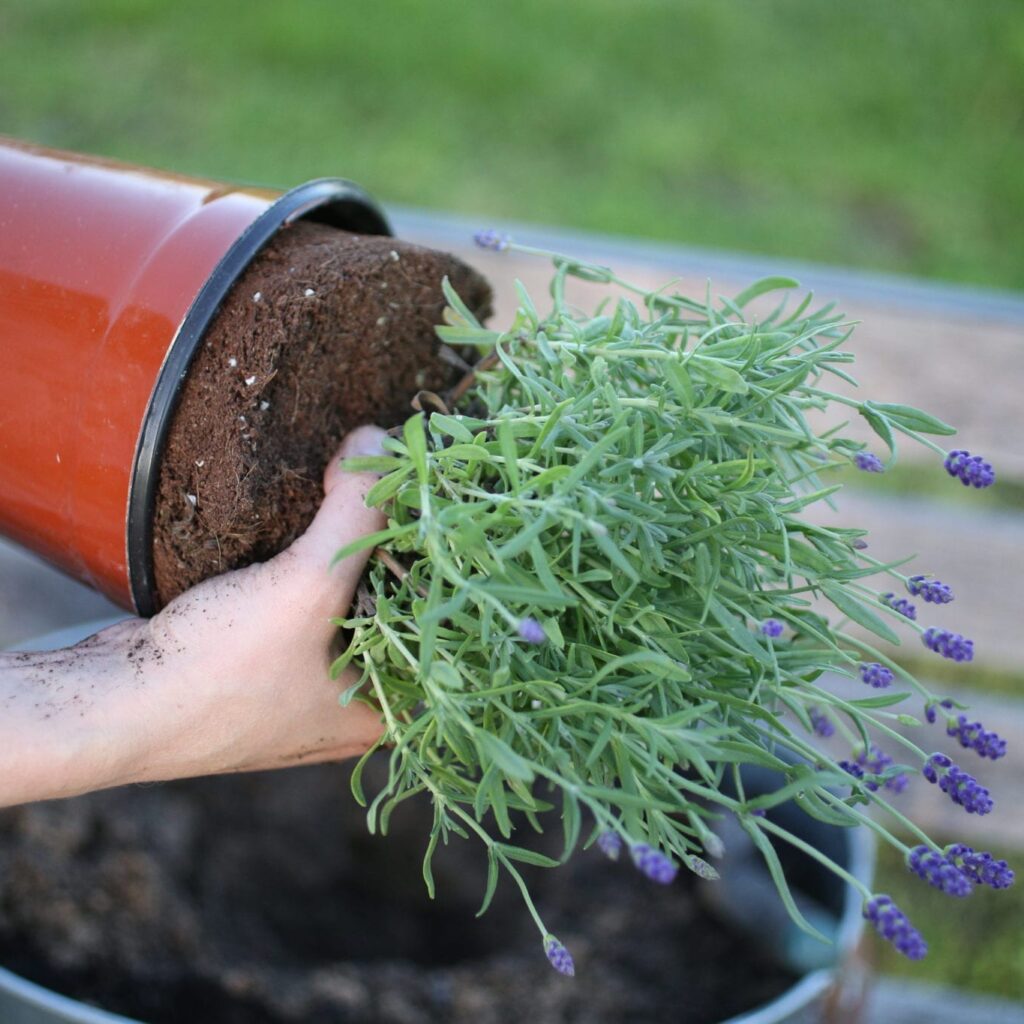
Follow these detailed steps to successfully propagate lavender from cuttings:
1. Select a Healthy Parent Plant
Choose a vigorous, disease-free lavender plant with strong, healthy stems. Avoid using flowering stems, as they divert energy from root formation. Instead, opt for non-flowering side shoots.
2. Take the Cuttings
- Using sterilized shears, cut a 3 to 4-inch (7–10 cm) length of stem from the parent plant.
- Make the cut just below a leaf node (the point where leaves attach to the stem) since this area contains high concentrations of growth hormones.
- If taking multiple cuttings, keep them moist by placing them in a plastic bag lined with damp paper towel until you’re ready to plant them.
3. Prepare the Cuttings
- Remove the lower sets of leaves from the bottom half of the cutting, leaving only the top pair of leaves.
- If the top leaves are large, trim them by half to reduce moisture loss and stress on the cutting.
- Optionally, dip the cut end into rooting hormone powder or gel to encourage faster root development.
4. Prepare the Potting Medium
- Use a light, well-draining potting mix. A blend of equal parts compost, coarse sand, and perlite or vermiculite works well.
- Fill small pots or seed trays with the mix and water lightly to moisten the soil.
5. Plant the Cuttings
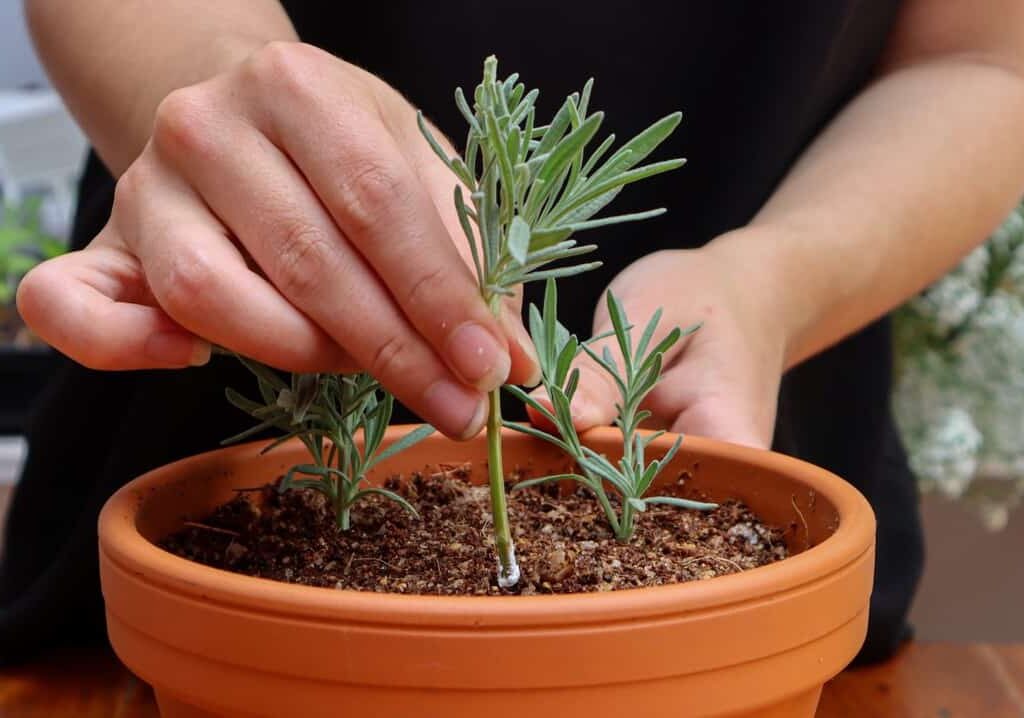
- Make a hole in the soil using a dibber (a pencil or stick works fine).
- Insert the cut end of each cutting about 1–2 inches deep into the hole.
- Gently firm the soil around the cutting to hold it upright.
- Space cuttings about 1 inch apart if planting multiple in a tray.
6. Maintain Moisture and Humidity
- Mist the cuttings with water and cover the pot or tray with a clear plastic bag or place it inside a propagator to create a humid environment.
- Keep the plastic from touching the leaves by using stakes or sticks.
- Place the cuttings in a bright, sheltered location with indirect sunlight. Avoid direct, intense sun, which can cause heat stress.
7. Monitor and Water Regularly
- Check the soil daily to keep it slightly moist but not soggy.
- Mist the cuttings as needed to maintain humidity.
- Remove any cuttings that wilt or develop mold.
8. Check for Root Development
- After about 3 to 6 weeks, gently tug on a cutting. If you feel resistance, roots have formed.
- Softwood cuttings typically root faster (around 3 weeks), while semi-hardwood or hardwood cuttings may take up to 6–8 weeks.
9. Potting On the Rooted Cuttings
- Once a good root system is established, transplant the cuttings into individual pots filled with a well-draining soil mix.
- Place the young plants in a bright, sheltered spot and water sparingly.
- Gradually acclimatize them to outdoor conditions if you plan to move them outside permanently.
Caring for New Lavender Plants
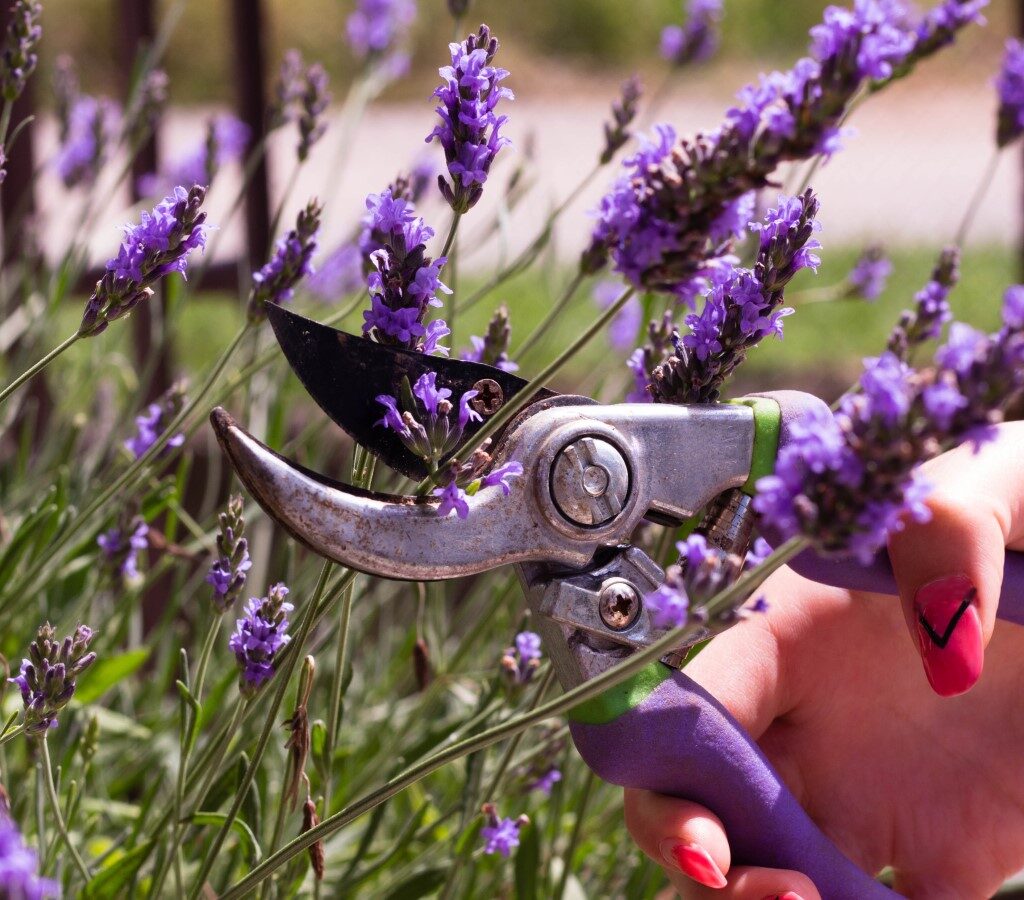
To ensure your propagated lavender thrives:
- Sunlight: Lavender loves full sun. Place plants where they receive at least 6–8 hours of sunlight daily.
- Soil: Use well-draining, sandy, or rocky soil with a neutral to slightly alkaline pH.
- Watering: Water sparingly once established. Lavender is drought-tolerant and prefers to dry out between waterings.
- Pruning: Lightly prune young plants to encourage bushy growth and remove flower buds during the first year to direct energy into root and foliage development.
- Overwintering: Protect young plants from severe cold in their first winter by moving pots indoors or covering them with garden fleece.
Common Problems and Troubleshooting
| Problem | Cause | Solution |
|---|---|---|
| Wilting cuttings | Excess heat, dry air, or insufficient humidity | Mist regularly and cover with a plastic bag |
| Moldy or rotting cuttings | Overwatering or poor drainage | Improve airflow, use well-draining soil, reduce watering |
| Slow rooting | Low temperatures or old woody stems | Use younger softwood cuttings, provide gentle warmth |
Conclusion
Propagating lavender from cuttings is a rewarding, cost-effective, and eco-friendly way to multiply your favorite lavender plants. By selecting healthy cuttings, providing the right growing conditions, and practicing careful aftercare, you can easily fill your garden, balcony, or patio with these fragrant, hardy plants.
Whether you’re aiming for a lavender hedge, container garden, or gifts for friends and neighbors, learning to propagate lavender ensures a continuous supply of this versatile herb for years to come.




Leave A Comment